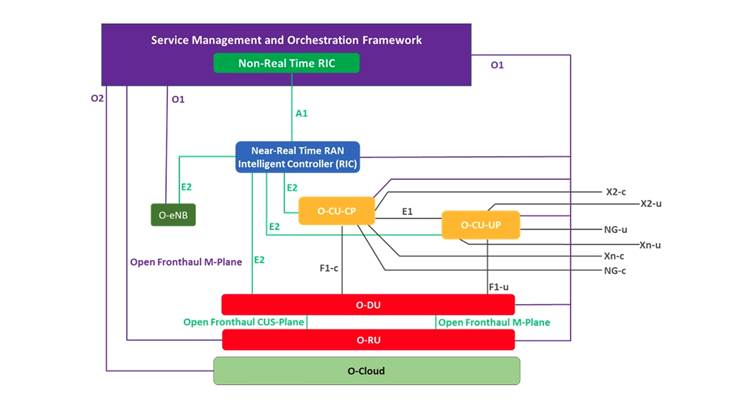The O-RAN Software Community (OSC), working with the Linux Foundation, recently published its 3rd open software release within 18 months, dubbed 'Cherry'.
Cherry moves the O-RAN ecosystem closer to commercial deployments in mobile networks around the globe. On top of new functions aligned with the latest O-RAN specifications, such as the E2, A1 and O1 interfaces, this release also features significant advancements in the end-to-end integration of O-RAN Architecture components to meet the needs of early adopters.
In addition, new software projects in the area of Service Management and Orchestration (SMO) have been initiated to drive the development of auto-configuration and management of O-RAN elements.
The main use cases delivered in Cherry include:
• Policy based Traffic Steering using the A1 and E2 interfaces
• Automated Monitoring and Health check of selected components using the O1 interface
• Configuration, Fault and Performance Management Services aligned with OAM models andspecifications newly approved by O-RAN
• Life Cycle Management Framework of rApps and xApps using SMO
• O-DU Low and High pairwise testing in O-RAN Software Community lab
• Simulators for testing and integration, such as E2, A1, Open Test Framework, and more
Jack Murray, Co-chair of the OSC Technical Operating Committee (TOC) and Assistant Vice President of AT&T
AT&T is proud to have continued its contributions to enable RAN AI/ML through the Near-RealTime RIC implementation, and to provide a platform for software testing and integration.
Chih-Lin I, the Co-Chair of O-RAN Technical Steering Committee
It not only realizes more 3GPP-defined models, but also brings O-RAN defined interfaces including E2 and A1 closer to commercialization. More ML and AI technologies are implemented in the RIC, RICAPP and NRTRIC projects to push the traffic steering e2e usecase forward, which makes it a more intelligent RAN.





















